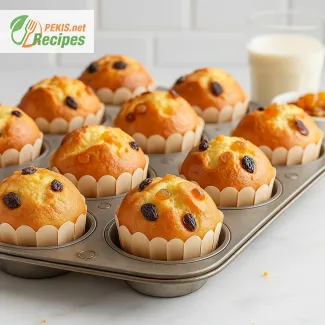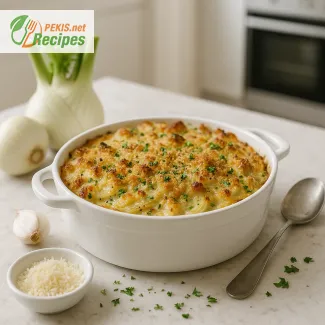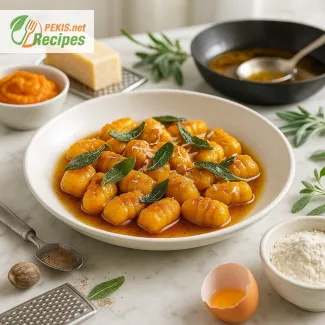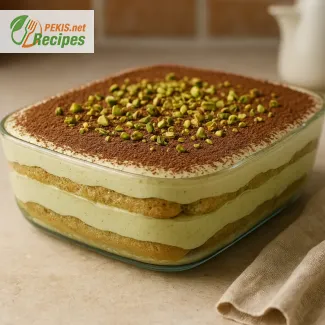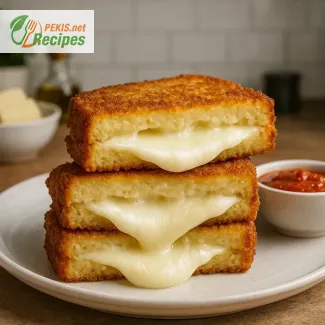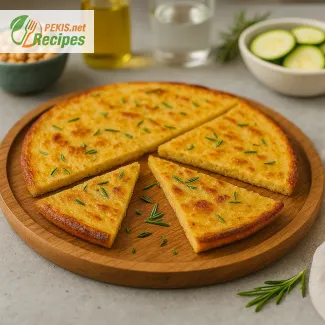
Discover the Essence of Ligurian Cuisine with Farinata di Ceci
A centuries-old flatbread made from chickpea flour, olive oil and simplicity
Italy’s regional cuisine is a treasure trove of rustic, time-honored dishes, and among its most cherished secrets is Farinata di Ceci—a golden, crisp-edged chickpea flatbread hailing from the sun-drenched region of Liguria. Made with just a handful of ingredients—chickpea flour, water, extra virgin olive oil, and salt—this dish exemplifies the power of simplicity and quality.
Often served warm and enjoyed as a street snack in Genoa or as an appetizer across Northern Italy, farinata has gained popularity across borders for its naturally gluten-free nature and high plant-based protein content. With its creamy interior and delicate crispness, it's more than just a flatbread—it's an authentic taste of Italian tradition, deeply rooted in coastal culture and still beloved by locals and food lovers alike.
What is Farinata di Ceci?
A simple yet iconic chickpea pancake from the Ligurian coast
Farinata di Ceci is a thin, oven-baked flatbread made from a batter of chickpea flour (also known as gram flour), water, and olive oil. Traditionally baked in a blazing-hot wood-fired oven in large, round copper pans called “testi,” it develops an irresistible crispy crust and a tender, almost custardy center.
Originating from Genoa, this recipe dates back to Roman times and was historically known as “la torta di ceci” or simply “cecina” in parts of Tuscany. Farinata holds deep cultural roots, especially in port cities where sailors and dockworkers would eat it hot, straight from the oven, often seasoned with a generous grind of black pepper or fresh rosemary.
The Ingredients Behind Its Legacy
Minimalist ingredients with maximum flavor
What makes farinata so special is its reliance on just a few pure, pantry-friendly ingredients that, when combined, result in a surprisingly flavorful and textured dish. At its core is chickpea flour, an ancient staple used throughout the Mediterranean and Middle East, prized for its nutty taste, high protein content, and naturally gluten-free properties.
Paired with extra virgin olive oil, known for its deep fruity notes and golden hue, and a touch of sea salt, the batter rests for several hours before being baked until perfectly bronzed and crisp. The high heat encourages a delicate texture contrast—crispy on top, smooth underneath—that defines a well-made farinata.
How Farinata is Enjoyed Across Italy and Beyond
From Ligurian markets to Parisian cafés
In Liguria, farinata is often served in triangular slices, eaten by hand, and enjoyed with a glass of chilled Vermentino wine. Street vendors in Genoa sell it fresh out of the oven in simple paper wraps. In Nice, France, a similar version known as socca is popular at markets and coastal cafés. Even in Argentina, a variant called fainá is served alongside pizza, a testament to the Italian diaspora's lasting influence.
Across modern culinary circles, farinata has found its way into health-conscious diets, plant-based menus, and gourmet restaurants, praised for its vegetarian-friendly, protein-rich, and flavor-packed characteristics. Whether served alone or topped with herbs, caramelized onions, sun-dried tomatoes, or even goat cheese, this dish adapts beautifully without losing its identity.
Why Farinata Still Matters Today
A timeless example of sustainable, plant-based cooking
More than a regional curiosity, Farinata di Ceci stands as a symbol of resourceful cooking that embraces humble origins and transforms them into something extraordinary. It aligns seamlessly with today’s shift toward whole foods, clean eating, and plant-forward cuisine, yet it remains unchanged in its essence for hundreds of years.
The dish’s lasting appeal lies in its versatility—it’s a perfect side dish, a light main course, or even a post-workout snack. It can be sliced into thin wedges for canapés or cut into thick squares for hearty meals. It's rich in flavor without relying on dairy, meat, or processed ingredients.
Crafted from just four simple ingredients, this Ligurian staple proves that culinary greatness doesn’t require complexity—just quality, care, and tradition. Whether you’re new to Italian cooking or rediscovering Mediterranean classics, Farinata di Ceci offers an unforgettable experience that brings a piece of the Italian Riviera into your kitchen.
- Combine chickpea flour and water: In a medium mixing bowl, slowly whisk 150 g (1¼ cups) of chickpea flour into 450 ml (1¾ cups) of room-temperature water. Whisk until smooth and lump-free. Let the batter sit at room temperature for 2 hours, uncovered. Skim off any foam that forms on the surface.
- Preheat oven and prepare pan: Preheat your oven to 230 °C (450 °F). If using a convection oven, reduce heat to 220 °C (425 °F). Place a well-seasoned 30 cm (12-inch) cast iron skillet or baking dish in the oven to preheat as well.
- Add olive oil and seasoning: After resting, stir in 3 g (½ tsp) sea salt and 30 ml (2 tbsp) of olive oil into the batter. Reserve the remaining 15 ml (1 tbsp) olive oil for the pan. Optionally, add 2 g (1 tsp) finely chopped rosemary for added flavor.
- Bake the farinata: Carefully remove the hot pan from the oven, coat the bottom evenly with the remaining 15 ml (1 tbsp) olive oil, and pour in the batter. It should sizzle lightly. Bake for 20–25 minutes or until the top is golden and edges are crisp.
- Broil briefly for texture: For extra crispness, place under the broiler for 2–3 minutes, watching closely to avoid burning.
- Cool and serve: Let the farinata cool for 5 minutes before slicing into wedges. Serve warm, seasoned with black pepper and a drizzle of olive oil, if desired.
Creative Variations and Expert Tips for Perfecting Farinata
How to enhance flavor, texture, and nutrition in your chickpea flatbread
While the traditional Farinata di Ceci is beloved for its simplicity and authentic Ligurian character, there are numerous ways to elevate its flavor, refine the texture, and customize the dish to meet personal preferences or dietary needs. This versatile flatbread provides a canvas for experimentation—without losing its soul. Whether you're adjusting ingredients for a healthier twist, avoiding common preparation mistakes, or adding layers of complexity, the following tips will help you achieve a superior homemade farinata.
Using herbs and aromatics to deepen flavor
One of the most effective ways to enhance the flavor profile of farinata is by incorporating fresh herbs or aromatics. Adding chopped rosemary, thyme, or sage into the batter before baking introduces earthy and fragrant undertones. Alternatively, a pinch of ground cumin or smoked paprika can bring a subtle warmth or smokiness that contrasts beautifully with the nuttiness of chickpea flour.
For a Mediterranean twist, mixing in finely diced sun-dried tomatoes, black olives, or caramelized onions can transform farinata into a savory appetizer or light meal. These additions add natural umami and create textural contrast, giving the otherwise minimalist flatbread a gourmet flair.
Enhancing texture with preparation techniques
Achieving the ideal texture—a crisp top and a custardy, tender interior—requires both patience and precision. Allowing the batter to rest for at least two hours, or even overnight in the refrigerator, enhances the consistency and flavor. Be sure to whisk it again before baking to distribute any settled flour.
The pan you use also plays a critical role. A preheated cast iron skillet or a well-oiled copper baking pan conducts heat evenly, promoting an ultra-crispy bottom and edges. Pouring the batter into a hot pan creates an immediate sizzle, which is essential for developing that signature texture.
Why homemade farinata is superior to store-bought
When made at home, farinata offers complete control over quality and freshness. Many store-bought or mass-produced versions include additives, stabilizers, or excessive oil. With a homemade recipe, you can select organic chickpea flour, high-quality extra virgin olive oil, and unrefined sea salt, ensuring that each bite reflects the integrity of simple ingredients.
Moreover, the aroma and freshness of a just-baked farinata, still warm from the oven, far surpass any prepackaged alternative. Serving it immediately not only preserves its texture but also showcases the delicate interplay of flavors that can fade over time.
Avoiding the most common mistakes
Despite its straightforward nature, farinata can be easily compromised by a few key missteps. One of the most frequent errors is underbaking, which results in a soggy or rubbery texture. The batter should be spread thin (about 5–7 mm or ¼ inch) and baked until the edges turn deep golden brown. Failing to preheat the pan is another pitfall, as it prevents proper crust formation.
Another common mistake is overloading the batter with toppings. While herbs and additions can be delicious, too many ingredients weigh down the batter and interfere with even baking. Keep add-ins light and finely chopped for best results.
Healthier and allergy-friendly alternatives
Farinata is naturally gluten-free, dairy-free, and nut-free, making it a suitable choice for many dietary needs. However, if you're looking to lower the fat content, consider reducing the olive oil slightly and using a nonstick pan to compensate. For an extra nutritional boost, blend in grated zucchini, carrot, or spinach into the batter. These vegetables add fiber, vitamins, and moisture without altering the classic flavor too much.
For a protein-rich upgrade, top the baked farinata with a few spoonfuls of Greek yogurt, hummus, or crumbled feta, turning it into a satisfying main course. If you're following a low-sodium diet, replace sea salt with herb blends or nutritional yeast for a cheesy umami flavor without added sodium.
Elevating the presentation for modern dining
Though traditionally rustic, farinata can be reimagined as a refined dish. Try slicing it into geometric shapes, brushing with a light herb oil, and serving with seasonal salads or vegetable dips. For a dinner party appetizer, bake mini farinata rounds in a muffin tin and top each with ricotta, pesto, or roasted red peppers.
This adaptability makes farinata a smart addition to any kitchen repertoire—especially for those who appreciate food that is both simple and deeply satisfying. Every adjustment, from the flour you choose to the aromatics you infuse, offers an opportunity to rediscover this ancient Ligurian classic in a way that’s uniquely yours.
Allergens present in the recipe:
- None, naturally gluten-free and dairy-free.
- Cross-contamination with gluten may occur if using shared equipment.
Suggestions to avoid allergens and gluten:
- Use certified gluten-free chickpea flour to ensure no traces of wheat.
- Use a dedicated gluten-free baking dish to avoid contamination.
- No eggs, dairy, nuts, or soy are used, making it suitable for most allergies.
Vitamins and minerals per serving (approximate):
- Folate – 110 µg: Supports cell function and tissue growth
- Iron – 2.4 mg: Essential for red blood cell formation
- Magnesium – 50 mg: Aids muscle and nerve function
- Phosphorus – 130 mg: Supports healthy bones and teeth
- Potassium – 300 mg: Regulates fluid balance and blood pressure
- Vitamin E – 2.6 mg: Antioxidant that protects cells from damage
- Copper – 0.3 mg: Helps with iron absorption
- Manganese – 0.5 mg: Supports metabolism and bone health
- Zinc – 1.2 mg: Enhances immune function
Antioxidants per serving (approximate):
- Polyphenols – 75 mg: Help reduce inflammation and oxidative stress
- Flavonoids – 40 mg: Support cardiovascular and immune health
- Saponins – 20 mg: Linked to cholesterol regulation and immune modulation
- Vitamin E – 2.6 mg: Protects lipids and cell membranes from oxidation
- Carotenoids – 1 mg: Contribute to eye and skin health

